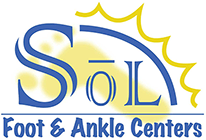The start of the high school cross country season is an exciting time for teenagers. For freshmen and sophomores, this may not only be their first attempt at inter-scholastic athletics, but also their first time running farther than a mile!
However, the more seasoned runners are likely setting loftier goals, and as a result, training and running more intensively.
This is a crucial time for a young runner. Those who are coached and train properly are apt to not only have successful high school athletic careers, but are also much more likely to make running and fitness a part of their adult lives.
The sport of cross country is a great way to introduce young people to running and fitness because while most of the time running is an individual sport, cross country involves the camaraderie of a team.
Each cross country team is only as strong as its weakest runner, so there is significant motivation even for those who aren't making a run at the finish tape.
However, while this motivation is excellent for getting more and younger runners involved, it can also lead to greater risk for injury. Beginner runners may have a tendency to train and race harder than their developing bodies can withstand, all in the name of "doing it to help the team."
Young beginner runners who sustain injuries at an early stage have a much higher incidence of abandoning running for another sport, or not participating in any athletics at all.
Here are 4 tips to help keep young cross country runners running healthy.
1. Shoes: It's all about the shoes! This doesn't mean the coolest shoes, the brightest shoes, the lightest shoes, or even the "fastest" shoes. It's very important for young runners to have training shoes that properly support their feet and prevent injury.
Today, most training shoes should cost $100 or more and should belong to one of the major running shoe brands: Brooks, Asics, New Balance, Saucany, Mizuno or Adidas. It also means that the shoes should be replaced after every 300 miles of training or at the end of each season - whichever comes first!
2. Pain Vs. Injury: Discerning the difference between pain and injury can be difficult. Training and competing in cross country, like any other sport, is going to involve some discomfort. It's not easy to run to the point of fatigue and then have to keep on going! There's likely to be sore feet, sore legs, sore knees, etc…
It can be very difficult for young runners, who are still learning what their pain threshold is, to decipher the difference between pain and injury. We want them to be able to push through some pain in order to improve. Success at doing so is good for their bodies and their minds. However, the last thing we want is for them to continue to run with a significant injury.
In order to tell the difference we use the FAILS pneumonic to help recognize symptoms that are likely to represent injury.
F - is for pain that is Focal to one area and not a more generalized soreness
A - is for pain that lingers After running and/or is present the following day
I - is for pain that is gradually Increasing
L - is for pain that causes Limping
S - is for pain that causes Signs such as bruising, swelling, or redness.
(For further discussion of FAILS, refer to our book, Run For Your Sol)
Because young runners may try to hide some of these findings, it's very important for coaches and parents to be alert to their presence.
3. Early Intervention. One of the great things about young athletes is that they recover very quickly. Ah, the glory of youth! However, any recovery will take much longer if the athlete continues to participate and an injury becomes more severe. We hate shin splints developing into stress fractures! This can be avoided by getting to a sports podiatrist early on in the course of an injury.
Besides treating the injury at hand, young runners may have previously undiagnosed foot conditions that predispose them to future running problems. If detected, the effects of these problems can often be lessened by using arch supports, custom orthotics, exercises and/or therapy. So don't hold back on taking your teenager to a podiatrist thinking that the problem will take care of itself.
4. Train Smart: Teenage runners need to be taught that running is not all about… running! Pre and post workout rituals and cross training are important aspects of keeping a young runner's legs fresh and healthy. The pre-workout program should consist of jogging at a pace slower than that of the main workout, followed by gentle stretching.
A similar jog and additional stretching should be performed after every workout. Additionally, high school runners can be quite successful with as little as 3 to 4 day s per week of actual running training. This training can be augmented and fitness levels increased (without harming young legs) by cycling, swimming, elliptical training or even pool running. Find out more details about stretching in our book, Run For Your Sol.
Statistics show that cross country and track runners have greater academic success than participants in other sports and also that they are more likely to maintain exercise as a focal point of their lives. However, this won't happen if an injury curtails their running career at an early stage. We must be there for our young runners with proper footwear, coaching, injury recognition, medical intervention and parental support.
We hope you find this information helpful in providing guidance to your high school cross country running teenagers and students. We believe that nurturing their interest in running can provide them with lifelong benefits.
For more information on running injuries for young runners and athletes, contact Dr. Richard Graves at Sol Foot & Ankle Centers 562-433-0478.

